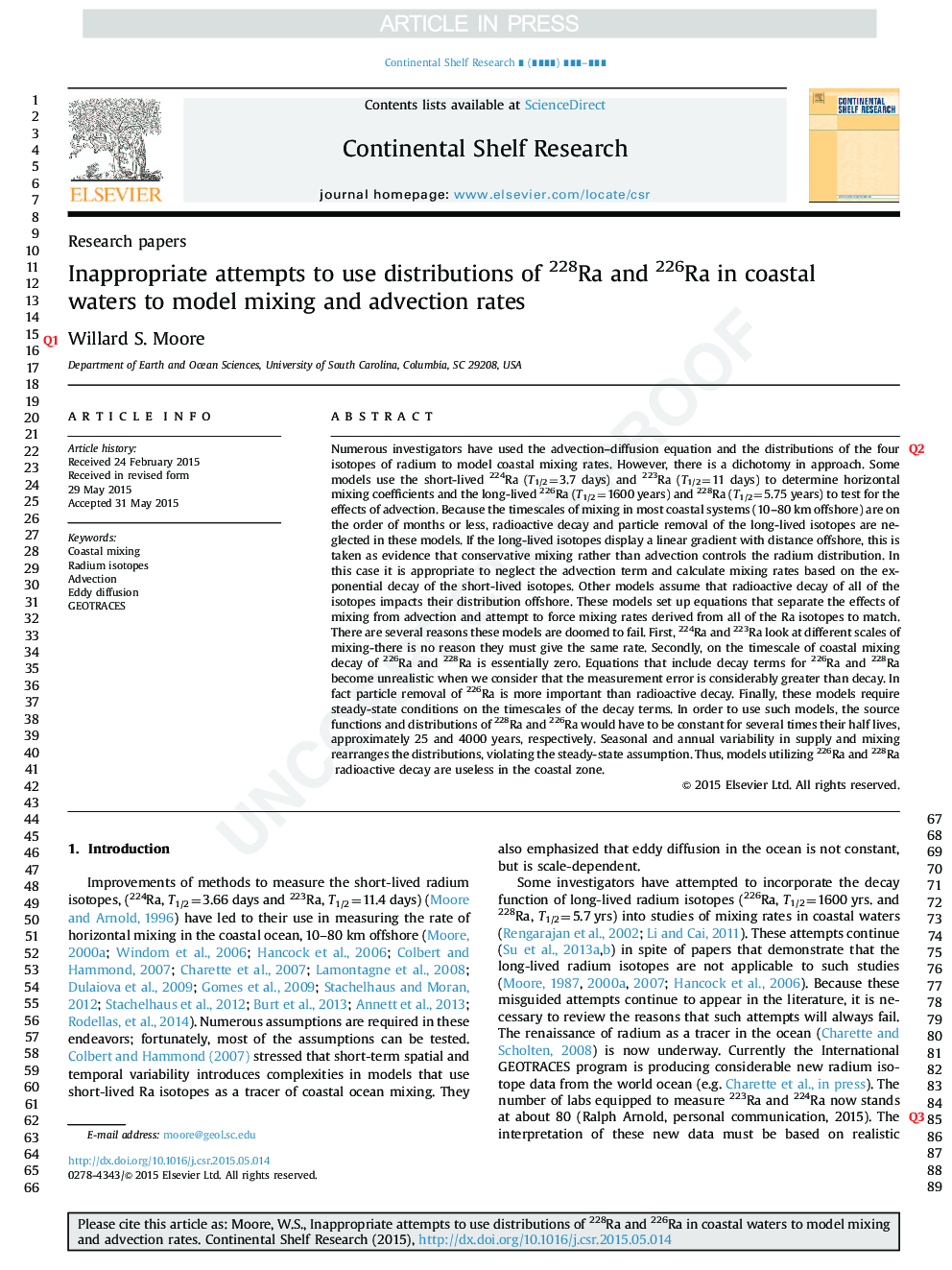| کد مقاله | کد نشریه | سال انتشار | مقاله انگلیسی | نسخه تمام متن |
|---|---|---|---|---|
| 6383094 | 1626107 | 2015 | 6 صفحه PDF | دانلود رایگان |
عنوان انگلیسی مقاله ISI
Inappropriate attempts to use distributions of 228Ra and 226Ra in coastal waters to model mixing and advection rates
دانلود مقاله + سفارش ترجمه
دانلود مقاله ISI انگلیسی
رایگان برای ایرانیان
کلمات کلیدی
موضوعات مرتبط
مهندسی و علوم پایه
علوم زمین و سیارات
زمین شناسی
پیش نمایش صفحه اول مقاله

چکیده انگلیسی
Numerous investigators have used the advection-diffusion equation and the distributions of the four isotopes of radium to model coastal mixing rates. However, there is a dichotomy in approach. Some models use the short-lived 224Ra (T1/2=3.7 days) and 223Ra (T1/2=11 days) to determine horizontal mixing coefficients and the long-lived 226Ra (T1/2=1600 years) and 228Ra (T1/2=5.75 years) to test for the effects of advection. Because the timescales of mixing in most coastal systems (10-80Â km offshore) are on the order of months or less, radioactive decay and particle removal of the long-lived isotopes are neglected in these models. If the long-lived isotopes display a linear gradient with distance offshore, this is taken as evidence that conservative mixing rather than advection controls the radium distribution. In this case it is appropriate to neglect the advection term and calculate mixing rates based on the exponential decay of the short-lived isotopes. Other models assume that radioactive decay of all of the isotopes impacts their distribution offshore. These models set up equations that separate the effects of mixing from advection and attempt to force mixing rates derived from all of the Ra isotopes to match. There are several reasons these models are doomed to fail. First, 224Ra and 223Ra look at different scales of mixing-there is no reason they must give the same rate. Secondly, on the timescale of coastal mixing decay of 226Ra and 228Ra is essentially zero. Equations that include decay terms for 226Ra and 228Ra become unrealistic when we consider that the measurement error is considerably greater than decay. In fact particle removal of 226Ra is more important than radioactive decay. Finally, these models require steady-state conditions on the timescales of the decay terms. In order to use such models, the source functions and distributions of 228Ra and 226Ra would have to be constant for several times their half lives, approximately 25 and 4000 years, respectively. Seasonal and annual variability in supply and mixing rearranges the distributions, violating the steady-state assumption. Thus, models utilizing 226Ra and 228Ra radioactive decay are useless in the coastal zone.
ناشر
Database: Elsevier - ScienceDirect (ساینس دایرکت)
Journal: Continental Shelf Research - Volume 105, 15 August 2015, Pages 95-100
Journal: Continental Shelf Research - Volume 105, 15 August 2015, Pages 95-100
نویسندگان
Willard S. Moore,